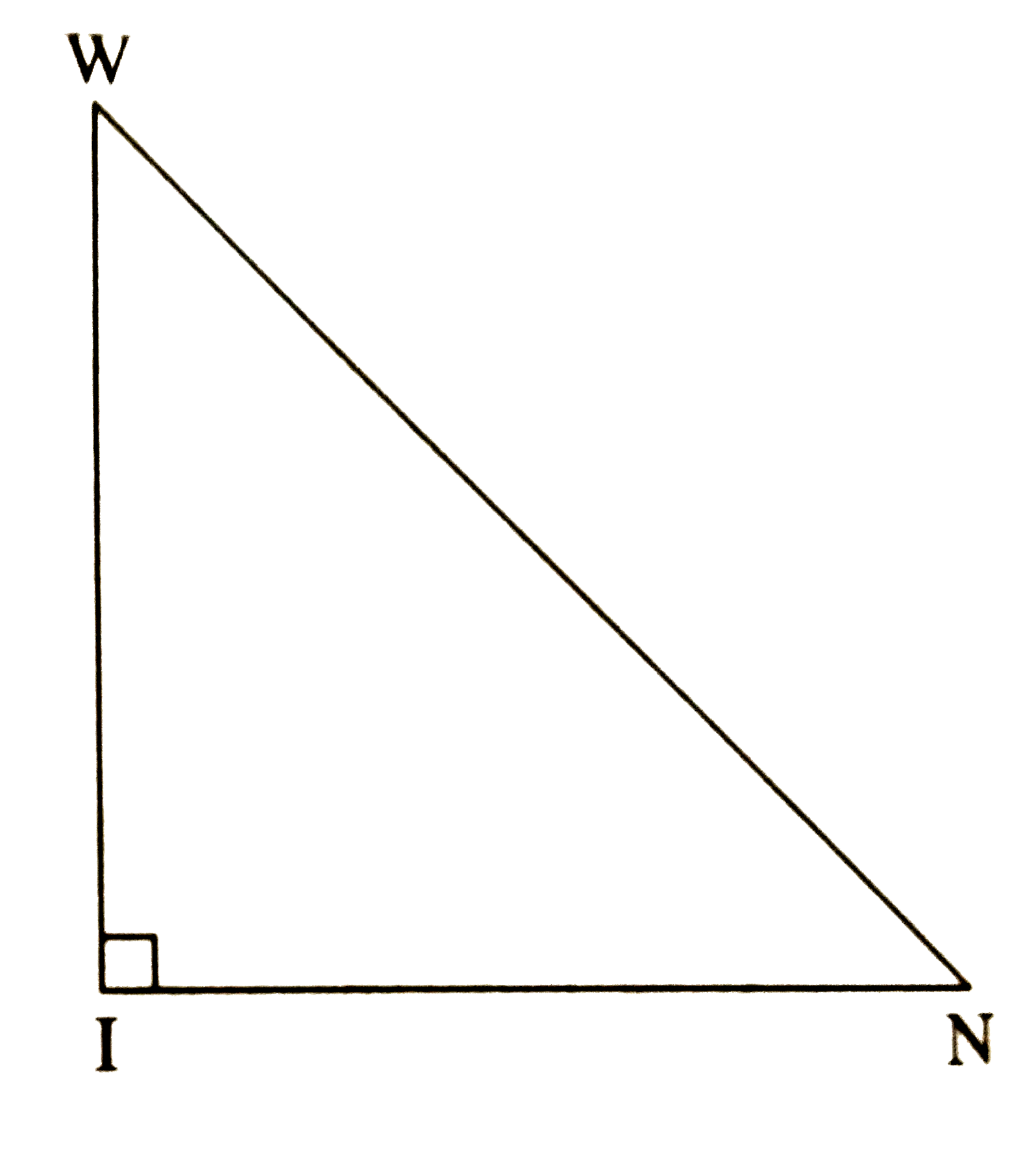In the figure , find sin N ,
cos N, tan W and sin W.

sin N =WIWN,cosN=INWN,tanW=INWI,sinW=INWN.
Topper's Solved these Questions
- PRACTICE QUESTIONS BASEDBOOK - NAVNEET PUBLICATION - MAHARASHTRA BOARDCHAPTER - PRACTICE QUESTIONS BASEDEXERCISE - SURFACE AREA AND VOLUME
17 Videos
- PRACTICE QUESTIONS BASEDBOOK - NAVNEET PUBLICATION - MAHARASHTRA BOARDCHAPTER - PRACTICE QUESTIONS BASEDEXERCISE - COORDINATE GEOMETRY
17 Videos
- PRACTICE QUESTION BASEDBOOK - NAVNEET PUBLICATION - MAHARASHTRA BOARDCHAPTER - PRACTICE QUESTION BASEDEXERCISE - STATISTICS
13 Videos
- PROBABILITY BOOK - NAVNEET PUBLICATION - MAHARASHTRA BOARDCHAPTER - PROBABILITY EXERCISE - ASSIGNEMENT 5.4
12 Videos
Similar Questions
In the given figure, if i1=3sinωt and i2=4cosωt, then i3 is 5sinωt+t(φ)∘). Find ϕ
'(##CEN_KSR_PHY_JEE_C24_E01_003_Q01##)'
View SolutionIf tanθ=mn, then find the value of cosθ and sinθ.
View SolutionIf x∈R and n∈I then the determinant Δ=∣∣ ∣ ∣ ∣∣sin(nπ)sinx−cosxlogtanxcosx−sinxcos{(2n+1)π2}logcotxlogcotxlogtanxtan(nπ)∣∣ ∣ ∣ ∣∣=
View SolutionIf sinA=cosA, then evaluate tanA+sin2A+1.
View SolutionFind the trajectory equation y(x) of a point if it moves according to the following laws :
(a) x=asinωt,y=asin2ωt,
(b) x=asinωt,y=acos2ωt.
View SolutionIf mcotA=n, find the value of msinA−ncosAncosA+msinA.
View Solutionfind the differentiation of cosx w.r.t sinx
View SolutionFind time period of the function, y=sinωt+sin2ωt+sin3ωt
View SolutionIf A=[cosθsinθ−sinθcosθ], then prove that An=[cosnθsinnθ−sinnθcosnθ],n∈N.
View SolutionFind the amplitude and initial phase of a partical in SHM, whose motion equation is given as
y=Asinωt+Bcosωt
View Solution
